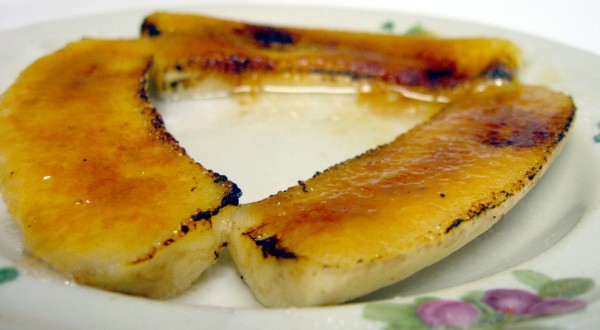Posts Tagged ‘shoestring gourmet’
Shoestring Gourmet Part 2: Playing the Grocery Game for Keeps
Shoestring Gourmet Part 2: “Playing the Grocery Game for Keeps”
Hunting grocery deals sounds about as sexy as taxes and laundry; however, purchasing food frugally needn’t just be just for frumpy housewives. I approach it as a game of skill and luck, always played for money. Play well, and you can afford those delicious, locally-raised tomatoes on a rice-and-beans budget! Most people are familiar with the basics: buy store-brand, get bulk discounts, shop stores with better bargains. But, how much of a difference do these strategies make?
To test these strategies, I decided to up my game by building a price book. I hit the road and gathered prices for staple goods at four local supermarkets. Each price book entry included the full facts: store, date, item, brand, quantity, and price. As a proper geek, I organized this into a database for analysis. Let’s find out how common sense advice stacks up.
Shoestring Gourmet Guide: Part 1, Meal Planning
A couple years ago, I decided to learn professional cooking the hard way: take a dishwasher job in a local fine dining restaurant, and work up from there. This put me in a pickle: I had to balance my budget on a dishwasher’s meager wages. Ironically, the only way to do it was by cutting back on something I loved: food and wine!
I had to cut the average weekly grocery bill to about $30/person; however, I still wanted to regularly cook gourmet meals. Even though I read everything I could find about saving money on groceries, the most useful strategies came from watching how restaurants keep food costs low to turn a profit.
There are several strategies restaurants employ: first, they plan their menu and preparation so that one step can be used in multiple dishes, and one ingredient in many ways. For example, beef stock is reduced and used in several sauces. Second, they also use strict storage techniques to ensure cooked dishes can be safely served for as long as possible, reducing waste. Third, they know market value of standard foods and negotiate with multiple suppliers to get deals. Fourth, they use tricks to employ cheap ingredients where possible, allowing them to showcase premium ingredients where they count the most. For example, port reductions used a cheap American port, but were served with top-notch meat.
Today, I will tackle the first topic: menu planning. more »


